Natural history continues to have a fantastic year at the ����ý. The new series of our much-loved brand Planet Earth III has brought audiences incredible new stories from across the globe. 10.5 million people watched episode one, making it the biggest factual episode on the ����ý this year as well as the biggest factual episode on iPlayer, showing people are still enthralled by the natural world. But in an increasingly crowded international field it’s important we keep moving the genre forward.
Our focus is currently on five areas:
1. Innovative landmarks
How do we make sure we are truly distinctive in a saturated marketplace?
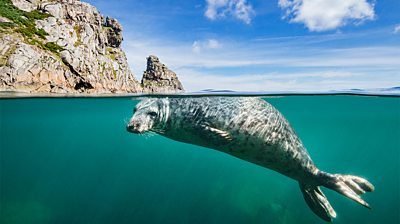
Our blue-chip landmarks are big, epic series that we tend to broadcast on ����ý One on Sunday evenings. Programmes characterised by big filming schedules, big budgets and big ambitions. While they maintain a strong linear performance, these series have also been performing fantastically on iPlayer over the last two years, with stunning imagery and internationally renowned talent making them stand out on the platform. With an 8.5 million series average, Planet Earth III continues to grow and has a significant audience on iPlayer, showing that natural history is truly evergreen and something viewers will discover on the platform long after its linear TX.
But we must keep moving forward and looking at new ways of telling big stories. As the global marketplace fills up with more blue-chip it becomes more saturated, and this is only going to get more pronounced.
So our mantra for natural history is innovation. There are three areas we want people to think about:
New subjects
How do we move on from the multi-item programme in which we skip between stories illustrating different kinds of habitats? We need to find fresh forms. How do we approach subjects we haven’t covered for a long time or at all? For example, Wild Isles took a blue-chip approach to tell amazing stories of British natural history closer to home.
New storytelling
How do we move on from closed episodes? We would love to build natural history content that is bingeable on iPlayer, that has cliff-hangers or other devices designed to pull in audiences and keep them hooked from one episode to the next. Or how can we borrow formats or structures from more poppy entertainment genres or documentary and use them in the animal world?
New technology
New filming technologies used in Planet Earth III have enabled us to witness animal behaviour in ways that have never been seen before. From remotely filming from thousands of miles away the largest gathering of octopus on earth, two miles down in the ocean, to hearing the sounds of minute treehoppers for the first time deep in the forest, technological developments are opening up the natural world like never before. Moments like this also help create amazing word of mouth buzz, which draws in new viewers. Think about how we can capture the rapid pace of change in the natural world. What other subjects would benefit from new technologies can we utilise to amaze our audience and give them unique new access?
2. Single films
How can our single films bring new angles and stories about the natural world to audiences?
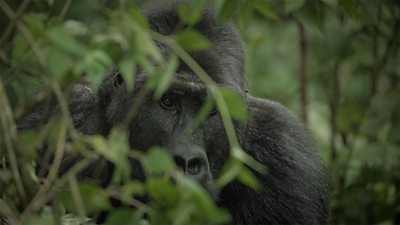
We're very excited about the new single films we are commissioning across natural history, whether feature lengths or hours. These films need to push the boundaries of filming the natural world in form and approach, and we want people to really think about this in the single film ideas they bring us. Films have to feel unique and cinematic and have real presence on iPlayer by feeling epic, important and powerful enough to justify their own cinema release. Think about what thumbnail image and clear title will help it stand out on iPlayer and sell your show to the audience.
We’re currently steering towards films with narrative driven documentary sensibilities, focussing on the wider international picture. It’s exciting bringing documentary makers and natural history expertise together. What other new approaches can we try out in our single films? These films are usually co-productions and it’s worth thinking about these funding models from the outset.
Human-led
We are looking for more human-led, narrative stories. This could be following the scientists and researchers who have worked with animals for decades and know them intimately, or people who have a close relationship with animals through where they live, be it troubled or symbiotic. It’s also a great way to feature diverse talent at the heart of the stories. In the award-winning wildlife cameraman Vianet Djenguet embarks on a journey of a lifetime - documenting a gruelling but critical conservation effort to habituate a family of eastern lowland gorillas. But, unexpectedly for Vianet, the mission pushes him to re-explore personal beliefs influenced by his past.
, a longitudinal feature-documentary follows baby elephant Toto and his keeper Joseph. Both orphans, Joseph must spend three years teaching Toto what it is to be an elephant, but the programme also uncovers what they learn from each other along the way. Following this story across three years enables a deep dive into elephant behaviour in a way we haven’t done before.
Archive
There is a wealth of natural history archive that not only tells the stories of individual species, but also of the changing world. By mixing natural history archive with in-depth interview – the same approach that a history or true crime film would take - we can bring in new audiences to the genre.
A good example of a narrative-led documentary is 2022's Lion: The Rise and Fall of the Marsh Pride, about the rise and fall of the most filmed pride of lions on the planet. It’s a big story, as gripping as any true crime drama, stretching over three momentous decades with betrayal, a fight for survival and even murder.
Place
It’s not just people and animals that are important for our single films, but people and place. People intrinsically connected to a location. This could be through an extreme outdoor sport or a dedicated personality, like the brilliant The Last Mountain, the tragic story of 30 year-old climber Tom Ballard who tragically died while climbing in the Himalayas. Or it could be people who are living so close to nature that the viewer really gets to understand the location through their eyes.
Tone
It’s very important our single films vary in tone and style. We’d love a bit more playfulness in our natural history storytelling, or more thrilling rides for our audience with risk and adventure. Snow Dogs saw Gordon Buchanan on his own and out of his comfort zone, following in the footsteps of Scottish explorers as he learnt to run huskies in the Yukon. And don’t forget that sometimes a really in-depth, thoughtful film can be as powerful as the most fast paced and thrilling.
3. Environmental storytelling
How can we find new ways of bringing audiences to stories about the challenges facing our planet?
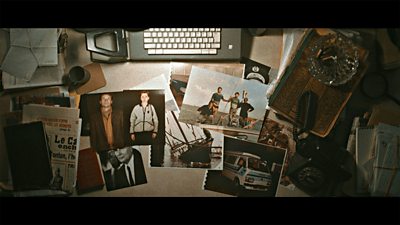
We’re more committed than ever to telling stories about the environment. In the last 18 months we’ve seen that when you get these films right there's a huge audience out there hungry for information and stories.
Our Changing Planet sets out to chart the health of our planet in six locations is a hugely ambitious series from us. Although it charts vulnerable habitats, and often their destruction, the series puts the amazing work of scientists and locals centre stage.
And of course, Planet Earth III and Wild Isles integrally explore climate change, whether it’s the threats faced around the world or how animals are adapting on our very own British Isles.
But how can we keep serving this engaged, passionate audience who are informed but who want to know more? What other ways can we entice audiences who would normally not come to environmental programming?
We’re interested in finding more environmental thrillers, where documentary and history meet natural history in a really interesting way. These are amazing stories with narratives that promise pleasure, excitement or intrigue, but then go on to reveal environmental science.
Murder in The Pacific is about the bombing of Greenpeace’s Rainbow Warrior in 1985, but through the gripping narrative it’s also a story about nuclear testing in the Pacific and its far-ranging repercussions. And follows the climate activists who protested against Russia’s Arctic oil production and the unbelievable narrative that unfolds. What other areas could we look at in this way?
4. Series and formats
How can we create compelling new returning brands that don’t take four years to make?
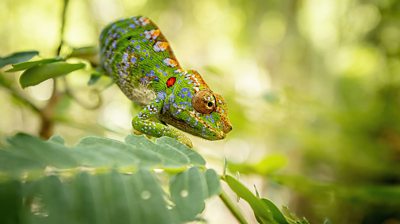
We’re looking for series that go beyond the traditional. These can be returning or limited series, but they need to push the boundaries of natural history filmmaking.
Expedition
We are keen to look at how to reinvent the expedition space. How do we bring roughness back into natural history filmmaking? The blue-chip series are fantastic at showing the beauty of the natural world, but we want to see more of the rawer side too. They have to feel authentic and purposeful, but also think about tone and approach. For example, Big Cats 24/7 sees expert camera teams from Botswana and the UK tracking lions, leopards and cheetah across the remote and unforgiving terrain the Okavango Delta, keeping their cameras rolling 24/7. The mix of cutting-edge technology and unique round the clock tracking means we can follow the cats’ amazing behaviour like never before.
Storytelling
We want to be more creative with storytelling. How can we tell stories differently? Maybe retrospective? Or how can we follow animal stories in a different way? Big Little Journeys follows six of the planet’s smallest creatures on their epic journeys of a lifetime. Using technology from The Green Planet we get down to their level, so you really see the journeys from their perspectives.
5. Talent
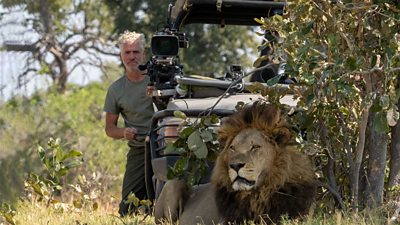
Existing talent
We have such a wealth of both established and new natural history talent, and we’re really interested in looking at how we work with them in different ways. Being immersive and authentic is really important. The best talent-led documentaries are when you really feel the talent has committed to what they’re doing and the subject they are talking about. In Silverback Vianet Djenguet embeds himself for an intense three months following gorilla habituation, taking the audience with him on the journey. And in Hamza: Strictly Birds of Prey, Hamza Yassin is the perfect host to introduce a wide range of viewers to the beauty of Britain’s wildlife and the people that are conserving it.
New talent
New talent in natural history is very important and we are keen to find the next generation of voices. Diversity is key. Who is out there with a unique style and approach to nature and environment that we should be talking to? For Big Cat 24/7 we have been able to launch a number of new on-screen talent faces both from Botswana and the UK, which is really exciting.
Unscripted on iPlayer
Read about how we commission unscripted content in an iPlayer first-world, along with advice and further resources to maximise the impact of your programme on the platform.
-

Commissioning for iPlayer: find out more
Strategy and advice for maximising impact on the platform
Natural history commissioners
-

Jack Bootle
Head of Commissioning, Specialist Factual -

Sreya Biswas
Head of Natural History
How to send us your ideas
-
Our ideas submission system for established companies
-
Accessing PiCoS
Eligibility criteria, how to guides and contacts -
How we commission
Our processes, commitments and priorities -
Not an indie?
Grow your skills and career in television
Further advice and support
-
Named business leads
Business advice per genre for companies with ideas in play -
Indies outside London
Advice and commissioning leads for each Nation and region -
Small or new indies
Our tailored support packages and advice -
Diverse-led indies
Our investment, commitments and contacts
Production resources
-
Diversity on and off-screen
Requirements, funds and contacts -
Sustainable productions
Requirements, resources and contacts -
Production and delivery website
End to end programme delivery and contacts
Explore the site
-
Briefs and contacts
Commissioners and ideas -
Supporting indies
How we commission and work -
Skills and training
Industry training and skills development
